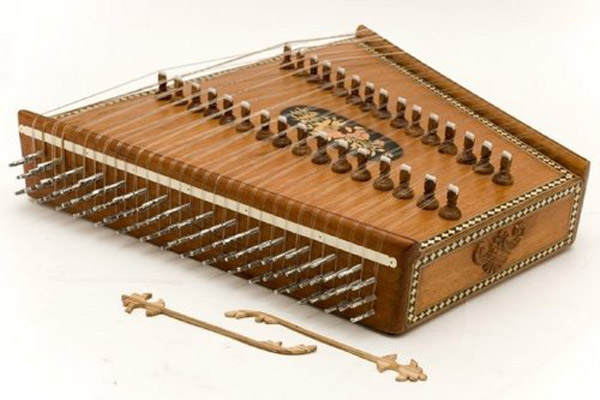For more on radio and music business news. | Click on RNMBiz

Mumbai: If you look at the geographical map of India, the crown of the country lies with Kashmir. Set in beautiful valleys and stoic silence, the state of Jammu & Kashmir has given reverberating music to the world of music. With a distinct sound and instruments, Kashmiri music symbolises serenity for the state is known as.
The proximity of the state to Central Asia has influences of music pertaining to that state. The various forms of music played in Kashmir are known as Chakri, Henzae, Ladishah, Sufiana Kalam, Rouf among many other sub-sects.
Like every folk form, Kashmiri folk, too, is the most natural expression of the state. Every occasion from birth to death has a form of music or song to express for the event. For example, for a death in kith and kin, a music form Van is expressed for adolescence, Bacchi Nagma is performed.
There is a separate section of folk music that is practised by women and is still performed at weddings. This form is called Vanvun. This form traces back to the Vedic period and has the legend of Lord Indra and Goddess Sinnavali attached to it. The form is even today sung during weddings and marriages at home.
While all the aforementioned forms of music are mostly performed at family gatherings and occasions, there are many forms in the state that are performed for the public too.
Watch the video here:
Chakkri, Ladishah, or Band Pather are some of them. These songs are sung mostly by minstrels and are unique. Chakkri is known for its fast-paced and rhythmic music on which the dance form Ruf is based. Ladishah is a musical satire that stands exclusively to Kashmir. The music is known to represent the current socio-political situations in a particular village. This performance is widely seen during the harvesting period and is known to reflect the true situation without any sugar coating.
Another major contribution of the state to the world of music is the number of varied instruments played in the state. Tumbaknari, Noet, Setar, Nai (Flute), Thaliz , Khayasa, Rabab, Santoor.
Santoor, especially, has gained international recognition, with efforts taken by Padmavibhushan Pandit Shivkumar Sharma. Not only did he bring this instrument to the foray, but also trained another generation of santoor players. Originally known as Shattantri Veena (literally meaning 100 strings), the instrument has been modified over the years to suit the new age and suit Indian Classical Music.
Tune into Spirit of Kashmir by Pandit Shivkumar Sharma
The instrument shows traces from the 13th century and usage of it is found in Mosiqui. In fact, the form of Soofiyana Kalam (classical music of Kashmir) music was incomplete without its usage. The classical music also has its own raga named Maqam.
The state has thus produced some of the finest artistes playing this instrument like Padmavibhushan Pandit Shivkumar Sharma from Jammu and Pandit Bhajan Sopori from Kashmir.
A state that is mired with political problems retains its natural and musical beauty. Less penetration of digital mediums is also one of the basic reasons why folk music in the state stands tall and beautiful. The recently released and much appreciated Raazi showed us a glimpse of Kashmiri music with its song Dilbaro, however, while drinking Kahwa or attending a Santoor concert is possible in other states too, experiencing this music in its own abode would be an experience worth a lifetime.
Watch Dilbaro song here: